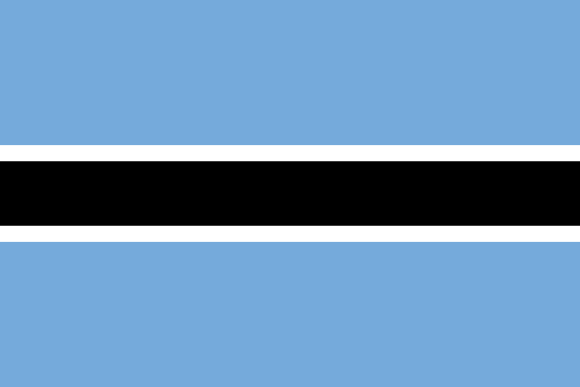At a glance
CDC works with partners in Botswana to build sustainable public health capacity, strengthen laboratory systems and surveillance networks, deliver high-quality HIV and TB diagnostic, treatment, and prevention services, and respond swiftly to disease outbreaks at their source, preventing health threats from reaching the U.S.

Strategic focus
In 1995, the U.S. Centers for Disease Control and Prevention (CDC) and the Government of Botswana began working together to address tuberculosis (TB). By 2000, as HIV quickly spread in Southern Africa, the partnership evolved to tackle this devastating epidemic, leading to remarkable results. Today, Botswana stands as a leader in global HIV efforts, having surpassed the UNAIDS 95-95-95 targets: 95 percent of people living with HIV in Botswana know their status, 98 percent of people who know their status receive treatment, and 98 percent of people on treatment are virally suppressed.
Botswana has made remarkable progress in protecting its next generation, becoming the first country to earn the prestigious “gold tier” certification for eliminating mother-to-child HIV transmission. With support from the U.S. President’s Emergency Plan for AIDS Relief (PEPFAR), the CDC partnership with Botswana continues to sustain these achievements for future generations, demonstrating what is possible when nations work together.
Read more about CDC's most recent key activities and accomplishments below.
Building public health capacity
- Strengthened disease surveillance by enhancing the Frontline Field Epidemiology Training Program (FETP) and launching a new FETP Intermediate program. The program trained 241 FETP participants (230 Frontline and 11 Intermediate), strengthening Botswana’s workforce capacity to identify and respond to disease outbreaks before they spread.
- Helped establish the Botswana Public Health Institute and Emergency Operations Center for coordination of critical public health functions and trained leadership on public health emergency management.
- Implemented a Clinical, Laboratory and Strategic Information Mentorship Program across all 27 health districts, covering over 80 percent of people living with HIV.
- Modernized healthcare data systems by connecting more than 515 facilities to electronic medical records and enhanced data analytics and use through data warehouse dashboards.
- Developed university partnerships and district-level training programs to support local research leadership.
Strengthening laboratory systems and networks
- Developed a National Laboratory Strategic Plan, standards, and other regulatory documents to help strengthen the tiered laboratory network.
- Expanded diagnostic capabilities to 18 district laboratories and achieved ISO 15189 accreditation in 9 laboratories.
- Built enhanced laboratory capacity, reducing test turnaround time by 60 percent.
- Supported point of care site certification, with 90 percent of facilities meeting international standards.
HIV prevention and treatment
- Exceeded UNAIDS targets with a 95-98-98 achievement, supporting more than 336,376 individuals on antiretroviral therapy.
- Expanded HIV recency testing from 10 to 79 sites, to identify recent infections for rapid and targeted response.
- Advanced toward "gold tier" certification by reducing Mother-to-Child Transmission (MTCT) of HIV to 1.6 percent, adding new goals for eliminating MTCT of hepatitis B and syphilis.
- Improved treatment accessibility for over 90 percent of stable HIV patients to receive a 3-month dispensing of treatment medication.
Tuberculosis prevention and treatment
- Strengthened TB/HIV integration, achieving more than 95 percent TB screening among HIV patients.
- Worked with partners to enhance diagnostic capacity, reducing TB diagnosis time.
By the numbers
HIV
Estimated HIV Prevalence (Ages 15-49)
16.6% (2023)
Estimated HIV Deaths (Age≥15)
Reported Number Receiving Antiretroviral Therapy (Age≥15)
TB
Estimated TB Incidence
244/100,000 (2023)
44% (2023)
TB Treatment Success Rate
76% (2022)
